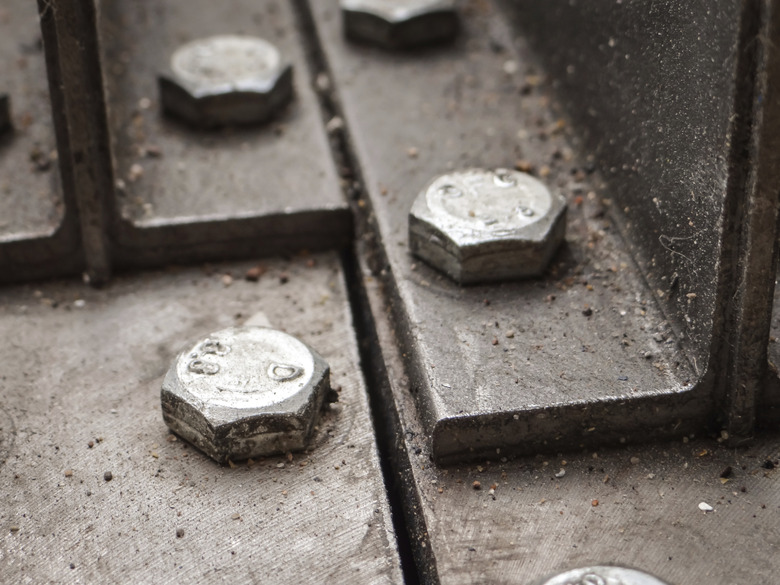How To Size A Hole For A Bolt
Things Needed
-
Bolt and thread gauge
-
Bolt hole chart
-
Drill and tap chart
Tip
If you're sizing a tapped bolt hole, drill a hole one size smaller than the bolt diameter for softer materials (aluminum and plastic) or the exact shown hole size for harder materials (carbon steel and stainless steel).
Incorrectly sized bolt holes weaken a bolted connection and can lead to a dangerous situation when the bolts are holding heavy weight. Pass-through and tapped are the two types of bolt holes. Each has different clearance specifications that determine the strength of the connection. The type of material and type of connection will determine the type of hole needed to secure materials with the bolt. Using the wrong type of hole will have an adverse effect on the holding ability of the bolt.
Step 1
Slide the bolt into an opening of a bolt and thread gauge. Move the bolt until it slides snugly into a gauge hole and does not move from side to side when the top of the threads sit flush with the top edge of the gauge.
Step 2
Move the bolt to the thread section of the gauge. Press the threads of the bolt against the gauge. When the threads sit even with the thread gauge, you have the correct threads per inch of the bolt. For example, a 1/4-inch-diameter bolt with 20 threads per inch is designated as a 1/4-20 bolt.
Step 3
Select a drill bit 1/32 inch larger than the bolt diameter for a tight fit hole or a drill bit 1/16 inch greater than the bolt diameter for a loose fitting hole.
References
- California Institute of Technology; Guide for Specification of Imperial Bolts, Threads and Hole Fits in Advanced LIGO Parts
- University of California at Davis College of Engineering: To Determine the Size of a Bolt
- Advanced LIGO: Guide for Specification of Imperial Bolts, Threads and Hole Fits in Advanced LIGO Parts
